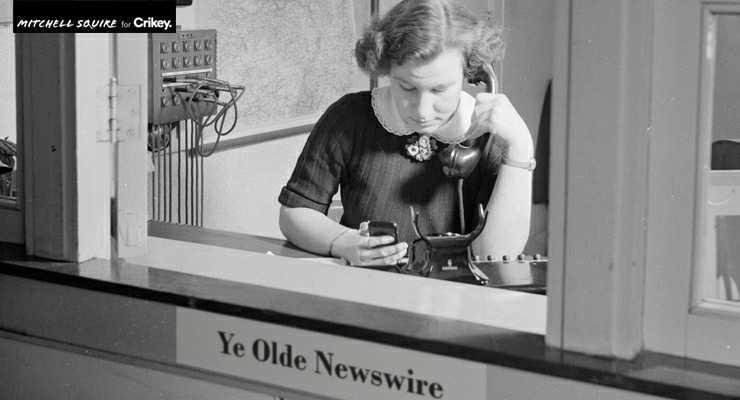
Here’s a back-to-the-future trend in news: the good old wire service, now remade to meet emerging and independent media needs on the attention economy battlefield against the power of both big tech and old media.
It’s a critical part of new media infrastructure, offering emerging and independent media a reliable floor of news and content to build their audiences. How critical? Important enough to annoy the old media duopoly to a degree that they’d close Australia’s domestic wire service, AAP, just last year.
Think of the new shared digital news services — like 360Info being launched out of Monash University today — as the 21st century version of the telegraph wires (or, before that, carrier pigeons) that globalised news supply chains to build mass media 150 years ago.
Initially distributing through the new not-for-profit AAP newswire, 360Info is aimed at publishing and broadcasting content partners across the Asia-Pacific by unlocking the university’s research and data on the big picture challenges, reworking them journalistically through a nine-person team of editors and producers based at the Monash Caulfield campus and sharing with content publishers under a Creative Commons licence. Next step are expanded partnerships with universities in London, Hong Kong, Nairobi and Delhi.
It’s a similar leveraging of higher-education research as Australia’s earlier news media innovation, The Conversation. (Also midwifed by Andrew Jaspan, now the driving force behind 360Info.)
The difference? The Conversation is “consumer-facing” — aimed at you, the reader. The new 360Info offers in-depth news analysis to other publishers on the likes of climate, food or energy — subjects that don’t lend themselves to the daily news cycle. Its initial packaging is a free special report each Monday, able to be adapted by subscribing publishers to specific audience needs for longer weekend reads.
There’s no website, no social media – none of the hard marketing to pull readers into their site where they can be monetised (in the case of The Conversation, this occurs through a gentle ask for donations).
Strengthening content diversity through networks and sharing for new (or some not-so-new) players is critical for the media ecosystem.
Across the Tasman, Radio New Zealand shares copy with most media. They manage the local democracy project funded by NZ on Air to hire journalists in largely provincial towns to file for both the local paper and RNZ. The BBC has similar arrangements in the UK. (The ABC does not.)
Initially, 360Info is piggy-backing off the new AAP wire service launched in July last year after the former co-owners, News and Nine, decided that they’d rather go without than own an organisation that benefited their competitors among emerging media.
The Nine-News hit threatened to freeze out new players from easy access to breaking news. Eventually, they agreed to sell to a not-for-profit consortium of investors and philanthropists who downsized and relaunched with a focus on breaking news, particularly from courts and sports.
The new AAP held 90% of its clients (including the ABC, and it’s even done some work with Nine), received funding from the federal budget, support from the Judith Nielsen Institute and became one of the few news media organisations to become what’s clumsily known as “Deductible Gift Recipient” so donors get a tax break on their money.
The sale, the structure and the grants sustained AAP’s offering of a high floor of shared independent information. It’s rebuilt to about 100 journalists. Adding the 360info content deepens the offering beyond daily breaking news.
News Corp continues to cast a shadow: after the sale, the US-based company set up an internal NCA (for News Corp Australia) Newswire, rather than patronise AAP. So far, it’s a device for internally allocating costs for shared content within the company, but its long been rumoured that it could undercut AAP by offering its feed to others.
The AAP team held their breath as News’ non-compete deal expired in January. So far, no action. Maybe News found the market too small. Maybe they’re reluctant to poke the competition regulatory bear. Maybe they’ve switched resources to streaming for news, with the launch of Flash last month.
Not that it’s lost an interest in monopoly news services: last week it was reported in talks to buy small-cap ASX news site Stockhead after buying oil digital data and analytics provider OPIS for A$1.55 billion in August. Maybe it’s pivoting its news wire feed ambitions.








Good if local diversity and smaller outlets can be sustained, but a word of warning, internationally there have been issues cited with the consolidation of Anglo global news wires that operate in lock step….. and maybe too easily gamed for PR or agitprop…